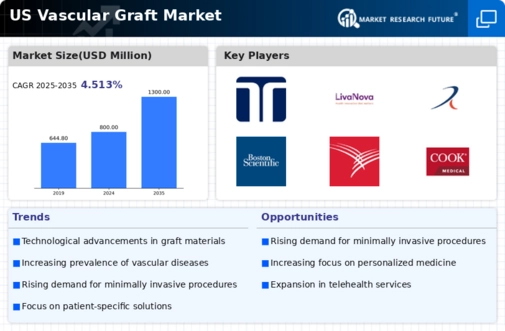The US Vascular Graft Market is characterized by a dynamic competitive landscape where various players are engaged in the development and distribution of vascular graft products. As the demand for vascular procedures increases due to the rising prevalence of cardiovascular diseases and the aging population, companies are striving to gain a competitive edge through innovation, product differentiation, and strategic alliances. Economic factors, healthcare policies, and rapid technological advancements also play a significant role in shaping the competitive dynamics of this market.
With a focus on high-quality products and clinical efficacy, companies are investing in research and development to introduce advanced grafting solutions that cater to a diverse range of surgical applications. This has led to heightened competition among market players, each aiming to capture a larger share of the market while enhancing patient outcomes and safety.
Teleflex has established a notable presence in the US Vascular Graft Market with a robust portfolio of innovative products designed for vascular access and intervention. The company leverages its strengths in research and development to create advanced technologies that improve clinical efficacy and patient outcomes. Teleflex is recognized for its commitment to quality and safety, which resonates with both medical professionals and patients.
Its strong distribution network and strategic partnerships further enhance its market position, allowing it to respond swiftly to customer needs and adapt to market changes. By focusing on developing products that fill therapeutic gaps, Teleflex strengthens its competitive advantage and maintains a pivotal role in the sector.
LivaNova has carved out a significant niche within the US Vascular Graft Market through its commitment to innovation and quality. The company is known for its advanced graft technologies and a comprehensive portfolio of cardiovascular and vascular products, addressing critical surgical needs. LivaNova’s strengths lie in its extensive research initiatives and collaborations with healthcare professionals, which have led to the development of cutting-edge solutions that elevate patient care standards.
The company actively pursues strategic mergers and acquisitions to enhance its capabilities and expand its market reach in the US. With a focus on improving clinical outcomes through innovative graft solutions, LivaNova continues to reinforce its position as a competitive player in the vascular graft segment.


















